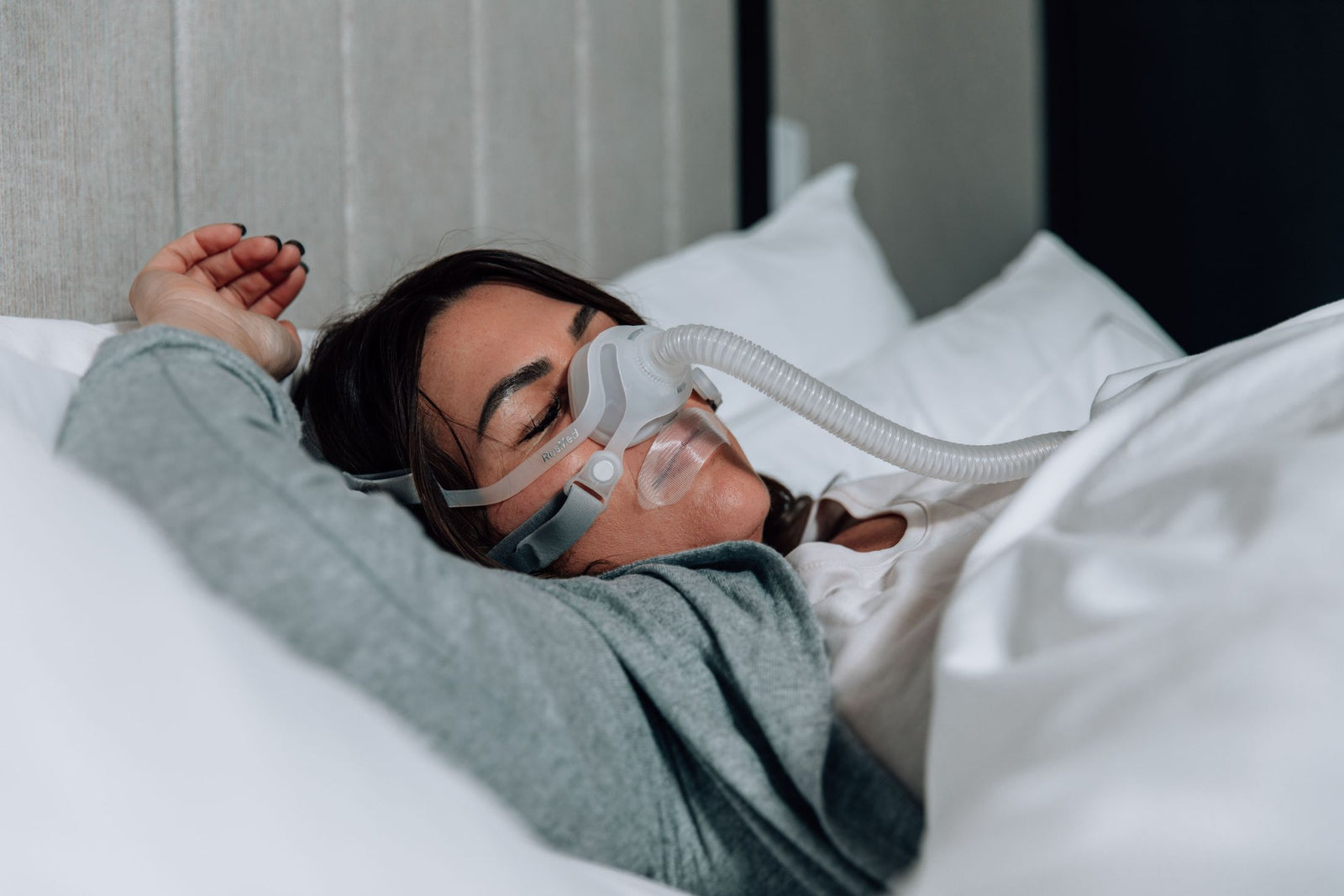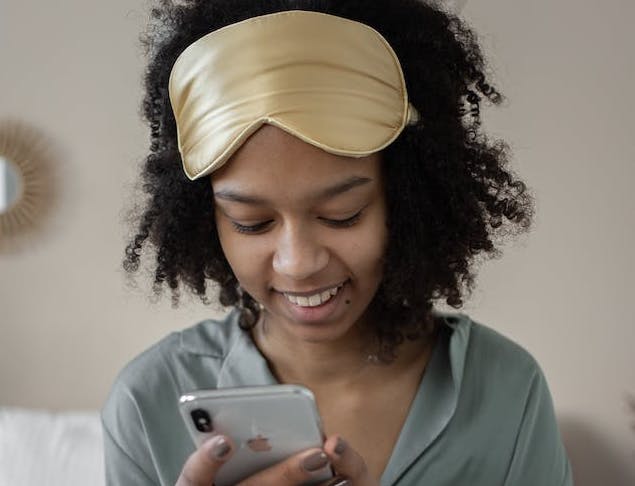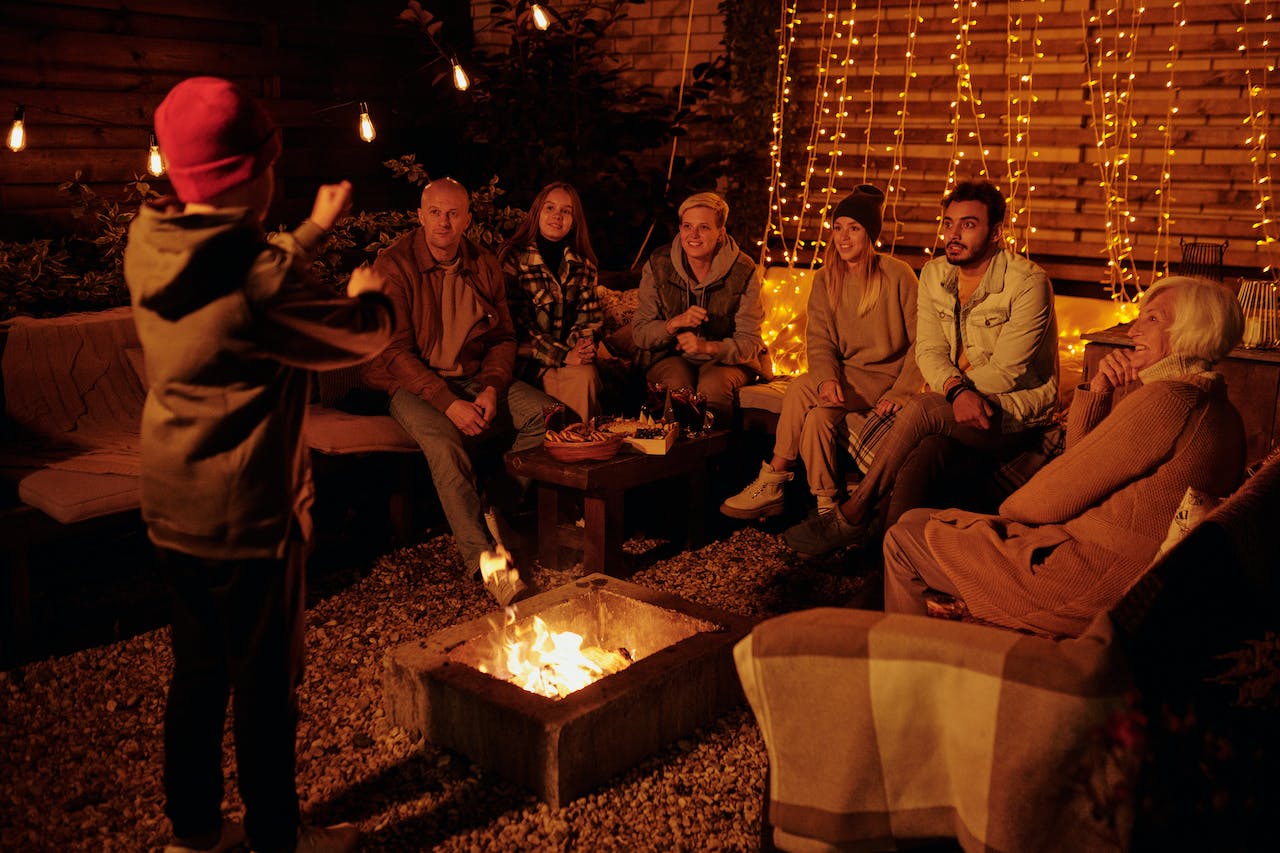One of the biggest pitfalls of Continuous Positive Airway Pressure (CPAP) therapy treatment? Mouth leaks. They’re noisy, uncomfortable, and they disrupt your (and your partner’s) sleep.
Fortunately, when it comes to preventing CPAP leaks, mouth breathing tape can help. Before we cover the specifics, let’s first talk about why mouth leaks are such an issue.
Why CPAP Leaks Are A Problem
If you have obstructive sleep apnea, you know that CPAP therapy is the most commonly prescribed method of treatment. But the effectiveness of the therapy depends on the proper amount of air pressure flowing through the machine into your mask and down your airway.
Your specific level of air pressure was determined by the results of your sleep study, so nothing must affect the amount of pressure in order to keep your airway open throughout the night.
All CPAP masks allow for a small level of leakage so that you can properly exhale. However, unintentional leaks can take the pressure within your airway down to dangerous levels.
When this happens, a full or partial collapse of the airway is still possible, even if you’ve worn your mask all night long. That means that your therapy can be rendered virtually ineffective.

Aside from hindering the quality of your CPAP therapy, mask leaks can be agitating and irritating in other ways. For example, if air leaks out around your eyes, the air can dry them out and irritate them.
Mask leaks can also create disturbing sounds such as whistling or hissing, which can keep you and your partner awake.
To ensure that your CPAP therapy is effective, you must find and address any leaks. But what causes them in the first place?
What Causes CPAP Leaks
Leaks occur for a variety of reasons. One of the largest contributing factors is a poor-fitting mask.
If there are gaps between the seal of your mask and your cheeks or mouth, the seal isn’t tight enough, allowing for air to escape.
Poorly adjusted straps can cause the same problem. If the straps are too tight or loose, the mask won’t fit correctly. That’s why it’s important to adjust your straps properly (and often).

If your mask fits too loose or too tight, consult the manufacturer and/or your physician for guidance.
Additionally, an ill-fitting mask may be caused by changes in your body weight or heavy wear and tear. Over time, the silicone on your mask will become thin and unstructured. It may even develop tears or holes.
The straps that attach to your mask will also wear out over time, stretching out and causing a loose fit. For this reason, you must update your gear regularly to ensure a proper seal.
Apart from replacing gear, it’s also important to keep everything clean. Dirt and oils from the skin can degrade your mask quickly, which is another potential cause of a poor fit.
Clean your face each night before bed and keep up with a cleaning regimen for your mask cushion, headgear, and tubing.
Clean the mask cushion and headgear daily with soap and warm water and rinse out the inside and outside of your tubing weekly with warm water and soap. Check for any holes or tears as you clean.
Even after cleaning, you may still experience pesky leaks. Another common culprit is mouth breathing. If you breathe through your mouth while wearing a nasal mask, for example, leakage is bound to happen.
The Big Issue With Mouth Leaks And Mouth Breathing
If pressurized air escapes from your mouth during CPAP therapy, you will likely wake up with a severely dry mouth. While that may sound like nothing more than an uncomfortable inconvenience, it can also lead to health problems.
Mouth breathing causes a decline in saliva within the mouth, which usually prevents bacteria and germs from coating the teeth and growing in the mouth.
Because of this, your chances of developing oral issues may increase. Mouth breathing increases the risk for:
- Sore throat
- Cavities
- Gingivitis
- The common cold

This throws off the balance of oxygen and carbon dioxide in the body and places additional stress on the cardiovascular system. In turn, mouth breathing causes the body to enter a state of fight or flight.
Nasal breathing, on the other hand, activates the parasympathetic nervous system, relaxing the body by producing nitric oxide. This is the way we were designed to breathe.
So what can you do to stop mouth leaks in their tracks, promote nasal breathing, and get the proper therapy your body needs?
Prevent Leaks in Your CPAP With Mouth Breathing Tape And Other Accessories
We’ve discussed the importance of proper fitting gear, adjusting your straps often, and cleaning your mask and tubes often. What else can you do to prevent pesky leaks?
One of the simplest ways to prevent issues with ill-fitting masks is to try them before you purchase. Make sure that you select the proper size and adjust your straps accordingly when trying on your mask.
You can also seek out assistance from CPAP accessories like mask liners. Mask liners serve as a physical barrier between your skin and your mask. This helps to keep oil and sweat off the seal of your mask.
The better of a barrier there is between your mask and oil and perspiration, the better of a chance there is that air won’t escape. Mask liners may also help to prevent facial irritation and improve the comfort of your mask.
A chin strap may help keep your mouth closed during sleep. However, chin straps are uncomfortable (and mouth leaks are still possible while wearing them).

Why? Because chin straps don’t provide a proper lip seal. Mouth tape, however, does.
Mouth tape works by adhering to the lips and the skin around the lips to keep the mouth from falling open during sleep. That means no mouth breathing, no dry mouth, no oral health risks, and more ineffective CPAP therapy.
@somnifix What does your #bedtimeroutine look like? 😴 #nighttimeroutine #nightroutine #mouthtape #airwayhealth #snoring #sleep #sleeptips via @sharonsparkles88
♬ Banana (feat. Shaggy) [DJ FLe - Minisiren Remix] - Conkarah
When it comes to selecting the mouth tape that’s right for you, SomniFix is on your side.
SomniFix: The Perfect CPAP Mouth Breathing Tape
Improving the effectiveness of your CPAP with mouth breathing tape can prevent leaks, improve the quality of your therapy, and help to protect your health.
Our strips are comfortable, non-irritating, gluten-free, latex-free, and hypoallergenic. Better yet, they offer a small vent that allows for mouth breathing in emergency circumstances such as severe congestion.

Once you’ve found a mask with a proper fit, checked your liner and tubes for holes or tears, and implemented a proper cleaning regimen, add mouth tape to the mix.
Seal your mouth as effectively as your CPAP with one of our Mouth Strips tonight and drift into leak-free, uninterrupted slumber.



